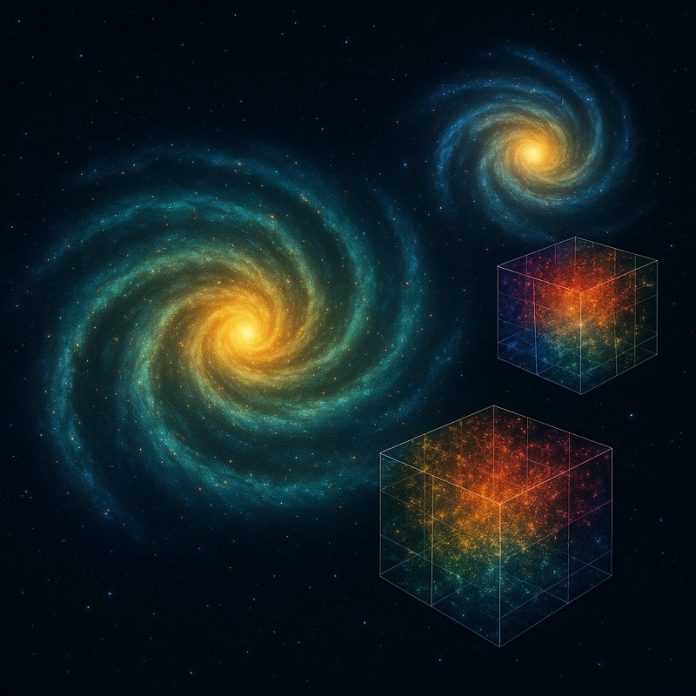
Scientists have created digital “twins” of our Milky Way galaxy to investigate one of the biggest puzzles in the universe: dark matter.
This invisible substance makes up about 85% of all matter in existence, yet we still don’t know what it is made of or how exactly it behaves.
A research team led by scientists from USC and Carnegie Observatories has developed a set of powerful computer simulations, called COZMIC, to test new ideas about dark matter by recreating galaxies under different physical conditions.
COZMIC stands for “Cosmological Zoom-in Simulations with Initial Conditions beyond Cold Dark Matter.”
These simulations allow scientists to model how galaxies form and change depending on how dark matter interacts with itself and with normal matter. Until now, it was impossible to simulate galaxies like our own while also including complex, non-standard dark matter physics. COZMIC changes that.
Vera Gluscevic, a cosmologist at USC and one of the lead researchers, says COZMIC is a big step forward in the search to understand what dark matter really is.
Along with co-leaders Ethan Nadler, now at UC San Diego, and Andrew Benson of Carnegie Observatories, the team has published three major studies using the COZMIC simulations in The Astrophysical Journal.
Although dark matter doesn’t emit light or energy, scientists know it exists because of how it affects the way galaxies move. Galaxies rotate so quickly that without dark matter, they should break apart.
But something unseen—likely dark matter—holds them together. It’s been nearly a century since astronomers first proposed the idea of dark matter, but studying it is like trying to understand a person by only looking at their shadow.
Using COZMIC, the team added new types of physics to test how dark matter might interact in ways we haven’t seen before. These simulations produced galaxies that look a lot like the Milky Way, but with key differences depending on which dark matter theory was used.
In one scenario, dark matter particles interact with protons early in the universe’s history—like billiard balls colliding—which smooths out small cosmic structures and removes many of the tiny satellite galaxies surrounding the Milky Way. Another scenario assumes a mix of dark matter types: some that interact with normal matter and others that don’t. A third model includes dark matter particles that interact with each other over time, changing the way galaxies form and evolve.
These simulations are more realistic than previous ones because, for the first time, they include the possibility that dark matter could interact with regular matter. Gluscevic says that such interactions aren’t exotic—they’re actually quite likely, and they could explain how the structure of our universe has taken shape.
Now, the team plans to compare their galaxy twins to real telescope images. This will help them test whether their simulated universes match the one we live in—and maybe bring them closer than ever to solving the mystery of dark matter.
Thanks to COZMIC, we’re no longer just guessing in the dark. We’re beginning to simulate, compare, and discover what might truly be shaping the universe.



